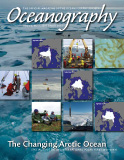First Paragraph
During the summer of 2012, the new research vessel (R/V) Sikuliaq, a 261-foot-long (~ 80 m) ship capable of working in and around first-year sea ice in polar regions, will be launched. The vessel is scheduled to commence science operations in early 2014 after extensive testing and field trials in the later half of 2013. Sikuliaq, pronounced [see-KOO-lee-auk], is an Iñupiat name meaning “young sea ice,” an indication of the important role the ship is meant to play in helping scientists understand and monitor changes in ice-covered waters. R/V Sikuliaq represents a unique addition to the US academic fleet, having an ice-strengthened hull designed to break through first-year ice up to 2.5-feet (.76 m) thick at speeds of a few knots. Although the ship was designed to facilitate studies of environmental change in the Arctic and subarctic, its size and general scientific capabilities make it well suited to conduct research throughout the global ocean.

